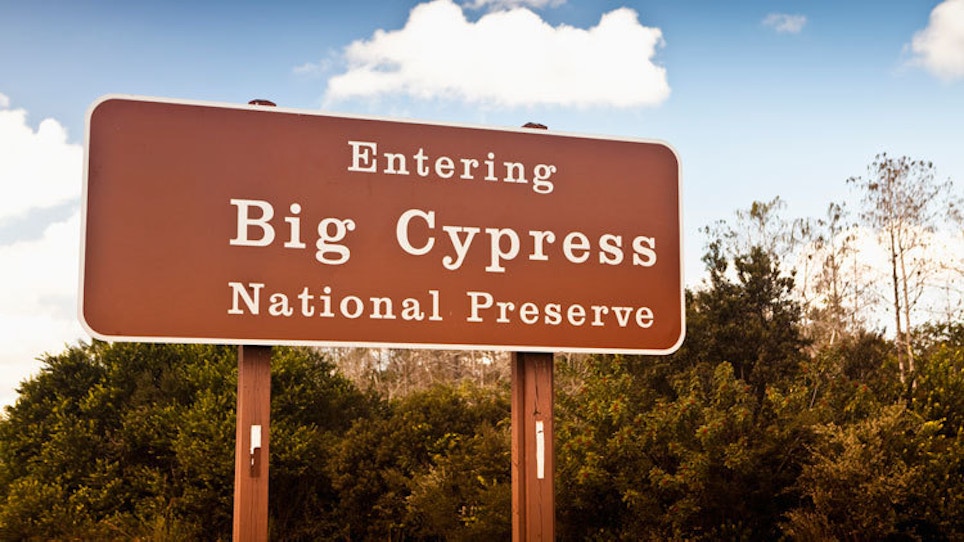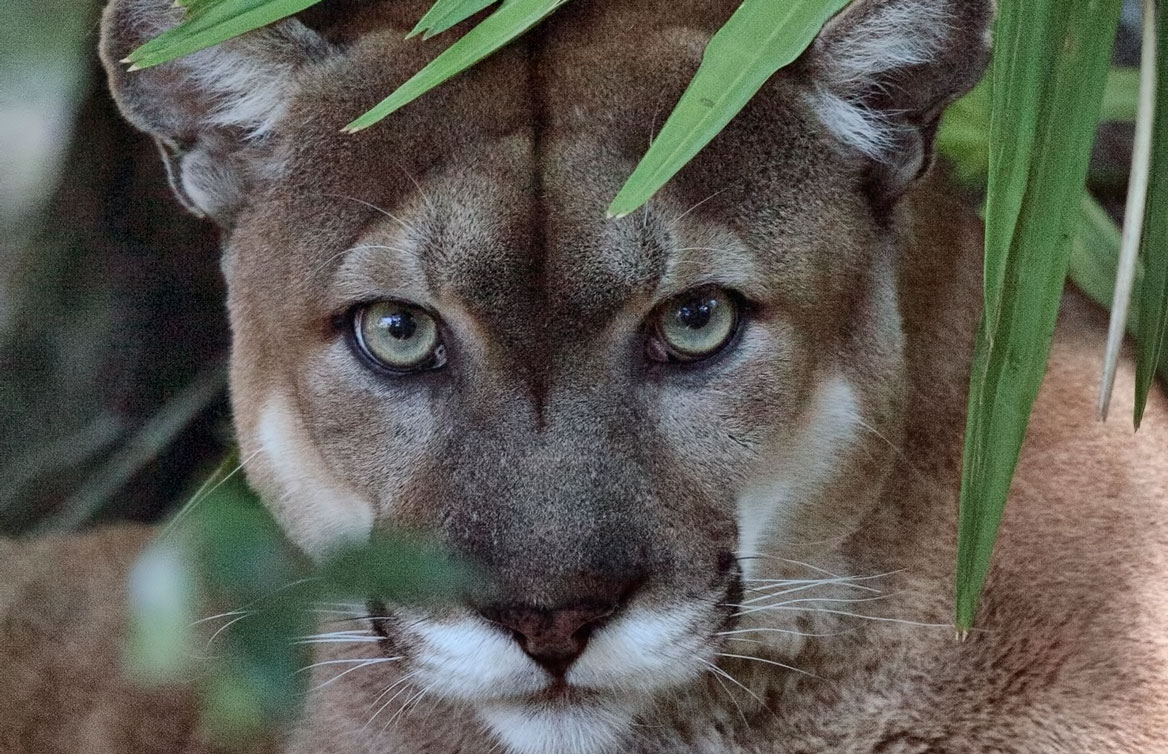While attending this year’s annual Quality Deer Management Association convention in Louisville, I had the chance to hear Dr. Karl Miller, from the wildlife program at the University of Georgia, discuss a large, cooperative research project taking place in the 700,000-acre Big Cypress National Preserve in Florida. Their South Florida Deer Study is designed to better understand the effects of hydrology, hunting and predation on deer population dynamics. The predator his crew is studying is the Florida panther, and the story he told had a lot of twists and turns, but relative to Florida panther/whitetail interactions, it was most interesting.
It turns out that 1/3 of all Florida panthers live in this huge preserve located along the southwest coast of Florida, west of Miami. The panther is a subspecies of our mountain lion and at one point in the early 1990s there were only 20 cats living in the Big Cypress preserve. This low number led to inbreeding with several serious side effects. One inbreeding trait was congenital heart problems often leading to death. Congenital heart defects were documented in 11 panthers in 1990 and 1991 and most panthers and panther kittens had heart murmurs. Two more visible traits that indicate inbreeding are the presence of cowlicks (90 percent of Florida panthers exhibit this trait, but only 9 percent of mountain lions elsewhere do) and kinked tails (88 exhibit this trait). But there was a much more serious problem. In 1990, 44 percent of all male panthers had low sperm counts and low sperm motility. This is not good and it explained why mountain lions were not breeding successfully and populations were stable for many years.
Originally, Florida panthers were genetically connected across the Southeast into Texas. As panthers were eliminated, that genetic connection was broken, but because the Florida and Texas panthers were originally from the same population, biologists brought eight Texas panthers into South Florida in 1995. The idea was to improve genetic variability and hopefully improve reproduction. It apparently had an effect as the population jumped from 20 in 2000 to 150 in 2015. This increase has led to several unusual events.
Panthers are really efficient predators. We’ve heard for years the stories of wild hogs moving into an area and causing habitat damage. We’ve also heard that once established they are almost impossible to eradicate. Not in the Big Cypress swamp. As mountain lion numbers increased, wild hog numbers plummeted. Apparently hog meat tastes good to the big cats, and today there are almost no wild hogs in Big Cypress and that means the cats have to find another source of protein.
Deer numbers in Big Cypress are relatively low compared to states further north. Annual aerial counts in some parts of the swamp showed that beginning in 2000 deer numbers started a decline (remember that’s when cat numbers started to climb). Other areas showed stable deer numbers, but they were not increasing anywhere even with limited hunting. Speculations on why deer numbers were not increasing included the fact that there was increased water in the area and increased predation by panthers. Apparently as cat numbers went up and wild hog numbers went down, deer predation increased. Compounding the problem was the fact that other potential deer predators also increased in number. Alligators, pythons, bobcats, coyotes and black bear populations all increased over the past 20 years. Alone, each predator species is not a problem, but when you stack up several predators, the situation can cause problems for deer.
As if that isn’t enough, there is also one other problem for the deer. Years of commercial development in South Florida seriously depleted water levels in the preserve. Laws and regulations changed to get more water into the swamp, and those have been successful to the point where the flooding now covers habitats where deer found food.
To see the change in impacts of panthers on deer, consider this data. In 1991, when panther numbers were low, researchers put radio collars on 57 deer in Big Cypress National Preserve and of the 26 that died, 10 were killed by bobcats and only four were taken by panthers. Today, with many more panthers, things have changed. Dr. Miller’s researchers put radio collars on deer in January 2015 and within three months, eight bucks and seven does were killed by panthers.
For various reasons, aerial deer surveys do not give the best estimates on deer numbers in Big Cypress. Thus, beginning in the fall of 2014, a grid of 180 motion-triggered cameras were put in place from February to November, 2015. The purpose was to get a large scale survey of the area and the “entire” deer population along with panthers and other wildlife. However, with 13 collared panthers and 57 collared deer, researchers were able to get some interesting feeding data. Note there are a series of trails throughout the study area and cameras were located in pairs, with one along these hiking trails and the other located within 100 yards, off the trail and not visible from the trails.
We know deer feed at dawn, dusk and at night and panthers do the same. With both species being active at the same time the chance for predation is enhanced. However, since 2000, that has all changed. Sixty-five percent of all panther photos were taken at night and 94 percent of those were on trails. The cats are feeding at night along the trails.
But 79 percent of deer captures at camera traps occurred between sunrise and sunset. Only 24 percent of doe photos were at night and 47 percent of those photos were taken along the trails. The bucks were not as wary. Forty-four percent of buck photos were at night when the cats were most active. Thus, deer have changed the time they feed by a large margin from night to day. And the does tend to avoid the trails where cats are most often active. The predation result? Panthers are still eating some deer, but fewer than expected. Only 22 percent of collared does were eaten by panthers, and 33 percent of bucks were killed. No question, had the deer not become diurnal many more would be eaten by the growing population of panthers.
The conclusions are obvious and unusual and I’ve not found another example of this change in feeding time for deer elsewhere. In this area of Florida with higher panther numbers, peak deer activity occurs during daylight and the presence of panthers is probably the reason. I might add that I’m not sure why the hogs didn’t figure this all out, but the raccoons apparently did. Raccoons normally feed at night and were being eaten by panthers, but have now moved to spend much more time feeding in daylight hours to avoid predation.
Obviously there is less energy cost for deer to feed at night, otherwise they wouldn’t be doing so in a normal situation. But this study shows that deer can assess their risk of being preyed upon during their lifetime and change their behavior. It’s a trade-off, but it apparently works in South Florida. Does this change in feeding behavior impact reproduction? We don’t know, but this study is planned to run four more years so the researchers will eventually be able to answer that question.
Why is this situation different than what we find in other mountain lion areas of the country and can we expect our deer to react by becoming more diurnal, perhaps in the rut? Wouldn’t that be an interesting turn of events for human hunters? Deer feeding during the day and not at night.
Won’t happen. Things are different in Florida because of the urban sprawl that isolates panther habitat. In 2014, 30 panthers were killed in Southwest Florida, and 25 of those died on highways. In other regions of the country, when mountain lion populations grow, younger individuals disperse to new areas, some moving hundreds of miles. That cannot happen in South Florida. Thus, predation increases and apparently the deer quickly adapted to become daytime feeders.







